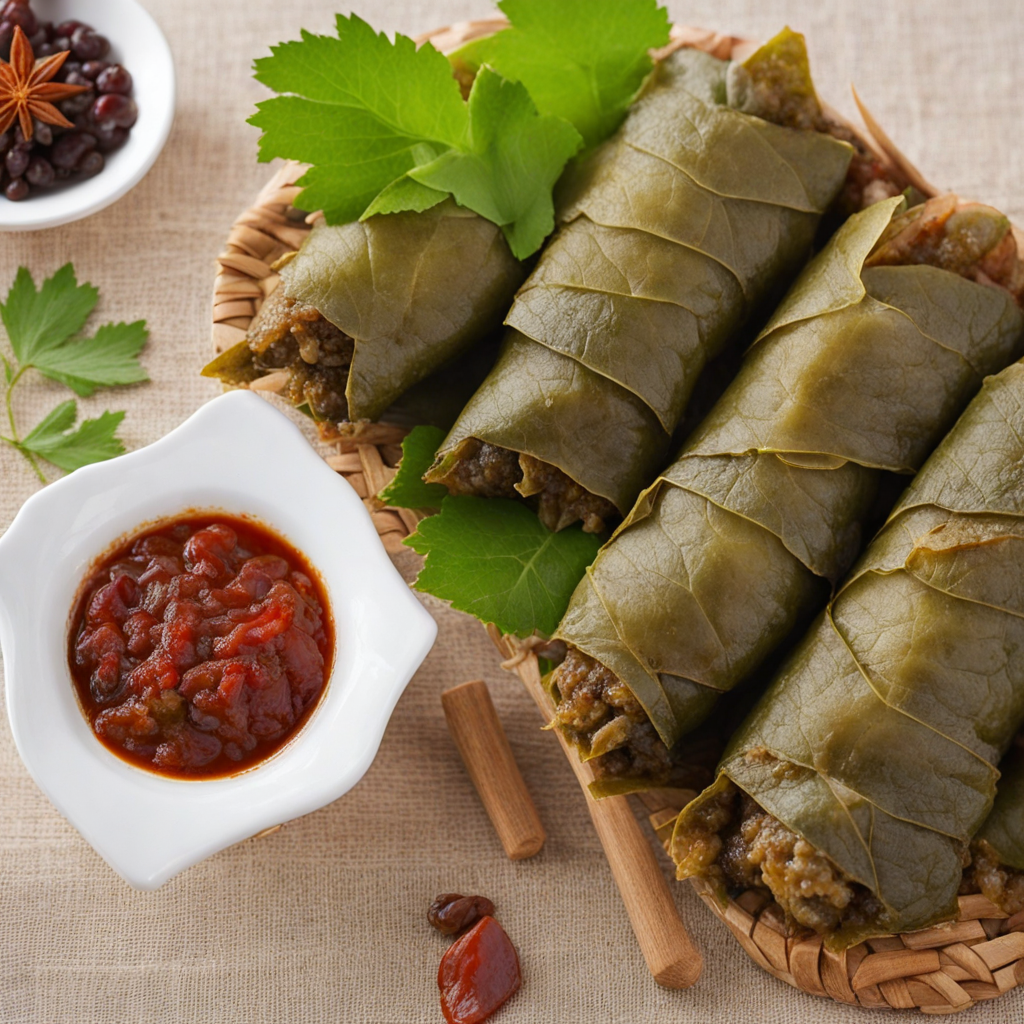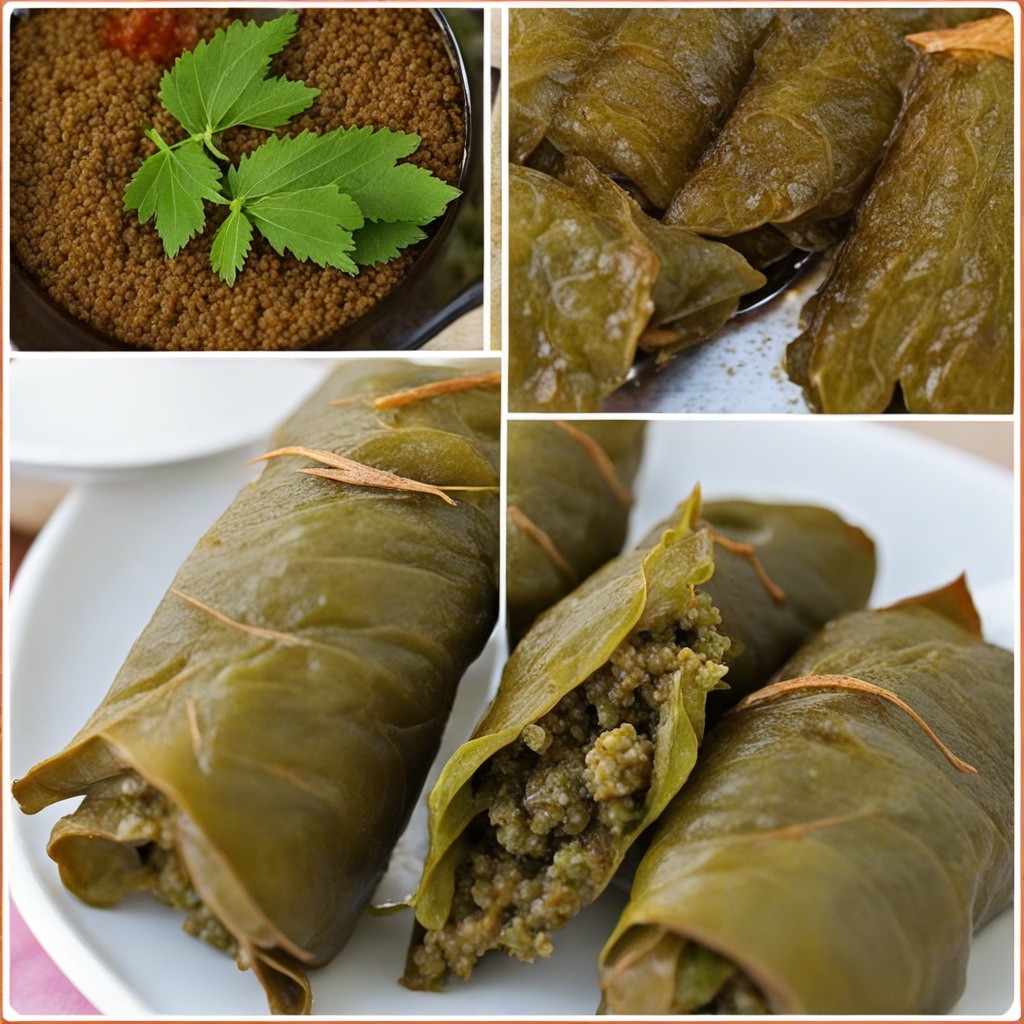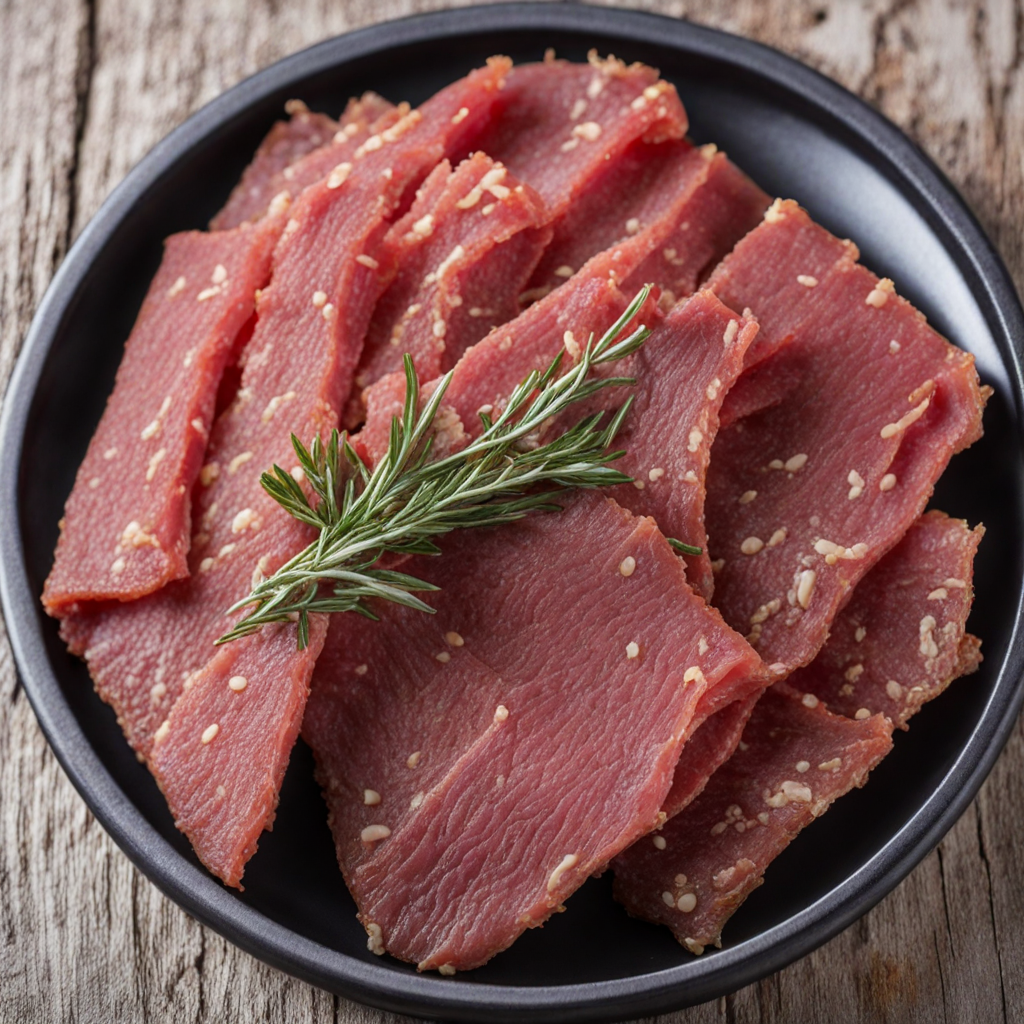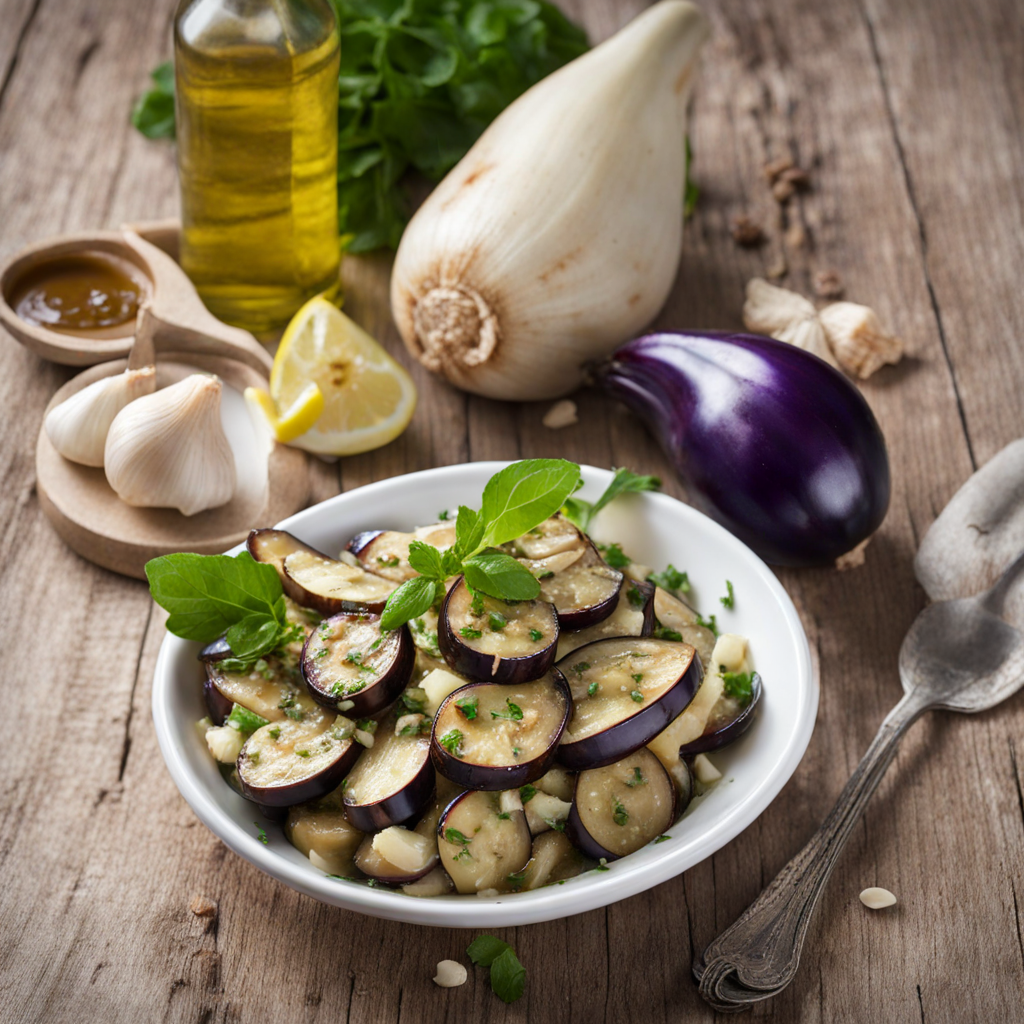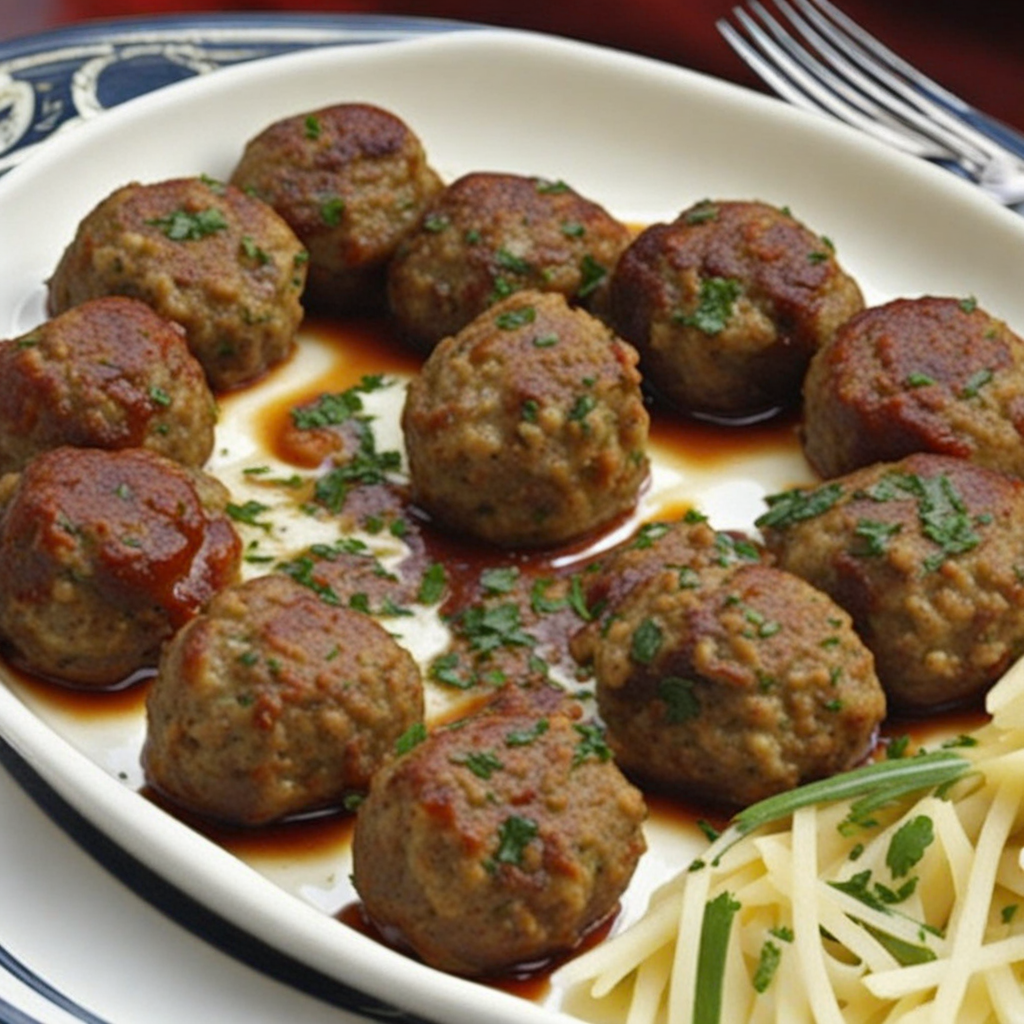Koupepia
Koupepia, a cherished dish from Cyprus, is a delightful culinary experience that captures the essence of Mediterranean flavors. This traditional meal consists of grape leaves, tenderly wrapped around a savory filling made primarily of minced meat, rice, and a harmonious blend of spices. The preparation begins with the careful selection of fresh grape leaves, which are blanched to soften them, making them pliable for wrapping. The filling is infused with aromatic herbs like dill and mint, giving the dish a fresh and zesty profile that contrasts beautifully with the richness of the meat. Each bite of Koupepia reveals a delicate balance of textures, where the tender leaves envelop the flavorful stuffing, creating a dish that is both comforting and satisfying. Cooking Koupepia is an art form that involves layering flavors through slow simmering. Once the grape leaves are filled and rolled, they are placed in a pot, often alongside slices of lemon and additional herbs. A gentle cooking process allows the flavors to meld together, resulting in a beautifully aromatic dish that fills the kitchen with enticing scents. The final product is usually served warm, drizzled with a bit of olive oil and a squeeze of lemon for a zesty finish. Each Koupepia is a testament to the culinary traditions of Cyprus, embodying the warmth and hospitality of the island's culture. When enjoying Koupepia, one can appreciate not just the taste but also the rich history and communal spirit that accompanies this dish. Often prepared for family gatherings or festive occasions, Koupepia brings people together, inviting them to share in the joy of good food and company. This flavorful dish is typically accompanied by yogurt or a light salad, enhancing the overall experience with refreshing contrasts. For those seeking to explore new tastes, Koupepia promises a delightful journey into the heart of Cypriot cuisine, offering layers of flavor that are both unique and unforgettable.
How It Became This Dish
The Culinary Journey of Κουπέπια: A Taste of Cyprus #### Origins Κουπέπια, pronounced “koupepia,” is a traditional Cypriot dish that embodies the island's rich cultural tapestry. Its roots can be traced back to the ancient civilizations that inhabited Cyprus, where food was more than sustenance; it was a means of expressing identity and tradition. The dish consists of grape leaves stuffed with a savory mixture of rice, minced meat (often lamb or beef), herbs, and spices, then rolled and cooked. The history of Κουπέπια is intertwined with the island's agricultural practices, where the abundance of grapevines has played a crucial role in local cuisine. The origins of grape leaf dishes can be found throughout the Mediterranean, particularly in regions influenced by Greek and Middle Eastern culinary traditions. The use of grape leaves as a wrapping for various fillings is a practice that dates back thousands of years, with the flavors and ingredients evolving as they spread across different cultures. In Cyprus, the dish became a staple for many households, representing a sense of comfort and familial love. #### Cultural Significance Κουπέπια is more than just a meal; it holds immense cultural significance in Cypriot society. The preparation of this dish often brings families together, especially during festive occasions and gatherings. It is customary for families to gather in the kitchen to prepare Κουπέπια, fostering a sense of community and shared heritage. This communal preparation reflects the Mediterranean value of togetherness, where food is a vehicle for social bonding. In Cypriot culture, food often accompanies celebrations, and Κουπέπια is no exception. It is frequently served at weddings, holidays, and religious festivities, symbolizing prosperity and abundance. The dish's preparation can vary by region, with each community adding its own unique twist, thus celebrating local ingredients and culinary traditions. This regional variation reinforces the rich diversity within Cypriot culture and highlights how food acts as a marker of identity. Furthermore, Κουπέπια is often seen as a nostalgic dish, evoking memories of childhood and family gatherings. The comforting aroma of cooking grape leaves fills the air and transports individuals back to simpler times. This emotional connection to food illustrates how culinary traditions can carry stories and histories across generations. #### Development Over Time As Cyprus has experienced various historical influences, the development of Κουπέπια has reflected these changes. The island's strategic location has made it a crossroads of civilizations, from the ancient Greeks and Romans to the Ottomans and the British. Each of these cultures has left its mark on Cypriot cuisine, contributing to the evolution of Κουπέπια. During the Ottoman period, the dish likely saw an influx of spices and cooking techniques that enriched its flavor profile. Ingredients such as allspice, cinnamon, and nutmeg became more common, enhancing the aromatic qualities of the filling. This period also saw the introduction of alternative fillings, including vegetarian versions that utilize lentils or bulgur wheat, catering to diverse dietary preferences. Throughout the 20th century, as Cyprus faced political and social upheaval, the role of food in society became even more pronounced. In times of hardship, traditional dishes like Κουπέπια served as a reminder of resilience and cultural pride. The dish became an emblem of Cypriot identity, with many families safeguarding their recipes as a means of preserving their heritage. In contemporary Cyprus, the popularity of Κουπέπια has grown beyond the home kitchen. It has found its way onto restaurant menus and is celebrated at food festivals, showcasing the dish to both locals and tourists alike. This newfound visibility has led to a revival of traditional cooking methods and an appreciation for the craft of preparing Κουπέπια. Many chefs experiment with modern interpretations, incorporating seasonal ingredients or unique flavor combinations, while still respecting the traditional essence of the dish. #### Regional Variations and Ingredients The preparation of Κουπέπια varies across different regions of Cyprus, reflecting local ingredients and culinary customs. In the mountainous areas, for instance, the filling might incorporate wild herbs, such as oregano and mint, that are abundant in the countryside. In coastal regions, seafood may find its way into the mix, offering a fresh twist on the classic dish. The primary components of Κουπέπια include grape leaves, which are typically harvested in late spring before they fully mature. This timing ensures the leaves remain tender and pliable, making them ideal for wrapping. The filling usually consists of a combination of rice and minced meat seasoned with herbs and spices. Some recipes might also include pine nuts or currants, adding texture and a subtle sweetness to the dish. The cooking process is equally important. Κουπέπια is often simmered slowly, allowing the flavors to meld together and the rice to absorb the savory juices. The dish is traditionally served hot, drizzled with olive oil and a squeeze of lemon, enhancing its flavor profile and adding a touch of brightness. #### Conclusion Κουπέπια is a dish that encapsulates the spirit of Cyprus—a fusion of history, culture, and community. Its origins as a humble grape leaf roll have evolved into a symbol of Cypriot identity, celebrated for its flavors and the memories it evokes. As the world continues to embrace the significance of food in connecting us to our roots, Κουπέπια stands out as a testament to the island’s culinary heritage. Whether enjoyed in a bustling restaurant or a quiet family kitchen, this dish remains a cherished part of Cyprus's gastronomic landscape, inviting all who partake to savor a piece of its rich history.
You may like
Discover local flavors from Cyprus


